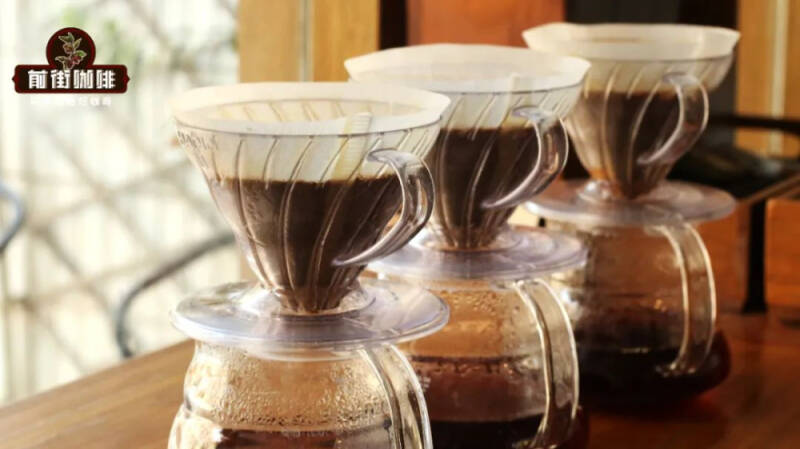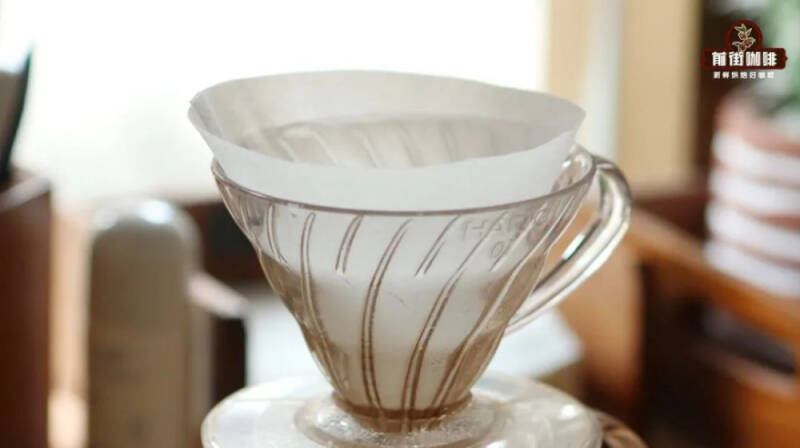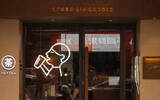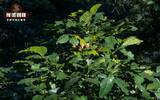How to determine the alignment between the filter paper and the filter cup? Why should the filter paper be moistened and pressed tightly with water when making coffee?
For most people, moist filter paper is the default first step before making coffee, which has two main purposes: one is to keep the filter paper in place, the other is to brush off the dust adsorbed on the paper, and if hot water is used, the utensils can be preheated together. In most tutorials, in addition to showing us how to keep the filter paper close to the filter cup, it will more or less emphasize the importance of filter paper fitting for coffee extraction, but rarely mention the impact of filter paper fit on the final taste of coffee.
Qianjie will conduct two waves of experiments today, using different degrees of filter paper to make coffee, and then compare them one by one to see how the final flavor performs.
The filter cup adopts V60 and KONO commonly used in the store, while the coffee bean chooses the corresponding fruit acid type and nut type representative. The specific cooking parameters are as follows:
Group V60 KONO Coffee beans Guatemala Flower God Brazil Red Bourbon Powder weight 15g15g Powder Water ratio 1 EK43s scale 15 Grinding 10EK43s scale 10.5 Water temperature 90 degrees Celsius 87 degrees Celsius three-stage water injection technique
As the focus of this round of experiments, Qianjie divides the fitting degree of the filter paper into three groups: the first group is that the filter paper fits perfectly with the filter cup without any bubbles in the middle; the second group is that the filter paper is not aligned with the center, resulting in half fitting and half hollowing out; the third group is completely out of place with the filter cup, hollowed-out or large bubbles appear on both sides.
V60 group comparison
The brewing time of the three pots of coffee was 1 minute 54 seconds, 2 minutes 04 seconds and 2 minutes 12 seconds respectively, and the TDs values measured by the concentration meter were 1.12%, 1.19% and 1.26%, respectively.
Flavor performance: the three pots of water washed by V60 are basically consistent in flavor, with the tonality of light flower aroma, citric acid, yellow drupe, Badan wood and green tea. If you use the first pot of coffee as a reference, the caffeine that the last two pots of filter paper don't fit is thicker, sour and bitter, especially the third pot with a slightly astringent aftertaste.

KONO group comparison
The extraction time of the three pots was 2 min 07 s, 1 min 54 s and 1 min 46 seconds, and the TDs values measured by the concentration meter were 1.13%, 1.06% and 0.98%, respectively.
Flavor performance: compared with the previous group of sour coffee, the flavor of the three pots of Brazilian Hillado made by KONO is obviously different. The first pot has the aroma of cream chocolate, caramel biscuits and Pu'er tea. In contrast, the second pot has only a light chocolate tone, while the baking flavor is weak and slightly watery, while the last pot has almost no aroma, rough taste and mostly bitter taste. Qianjie guesses that coffee extraction is not enough.
Seeing here, I believe that serious friends can already draw a conclusion, that is, in the case of filter paper without closing the filter cup, no matter using V60 with fast flow rate or KONO with slow flow rate, it will actually change the launching speed in the powder layer and affect the final extraction rate and concentration of coffee. Although the general flavor direction of coffee will not change, the taste of coffee will be different.
As many people know, the design of more than V60 spiral ribs can help coffee particles absorb water and expand, while allowing the current to squeeze the powder layer to create a richer sense of layering. In the first set of experiments above, Qianjie observed that if the filter paper is not attached to the filter cup, the coffee powder will be "one-sided", that is, one side is close to the edge of the filter cup, but the other is "exposed" to the air.

Although there was no problem at the beginning of the steaming stage, as the water level gradually rose, large bubbles began to appear in the part that did not close the filter cup, because it lacked the support of the ribs, so it could not dredge the powder layer, and the water rushed to other fitting places, resulting in uneven extraction. It is also because the flow of water has been hindered and the extraction time is forced to be extended, so coffee is easy to have the performance of extraction.
The KONO filter cup has a smooth inner wall surface compared with V60. This design is designed to ensure that the filter paper is close to the edge of the filter cup after wet water, while the whole filter cup has only 1/4 high diversion ribs at the bottom, so the airflow is limited to go up, and the water can only be left to the lower pot through the bottom. This design not only allows the powder water to have sufficient contact time, but also forms a better soaking effect for the extraction, when brewing deep roasted coffee. It can show a round and mellow taste.
So when we use KONO to make coffee, try to keep the filter paper in place, and then add powder and water. Otherwise, in the process of extraction, a "channel" will be quietly formed somewhere in the filter cup, allowing the water to run away directly along the hollowed-out place, resulting in insufficient extraction, and the taste of the coffee will become thin and rough.
Important Notice :
前街咖啡 FrontStreet Coffee has moved to new addredd:
FrontStreet Coffee Address: 315,Donghua East Road,GuangZhou
Tel:020 38364473
- Prev

Xi Tea Founding Store has fallen! The employees were so tired that they fell asleep!
▲ Click to pay attention| The end of the National Day holiday in the Daily Boutique Coffee Culture Magazine Coffee Factory means that it is time for migrant workers to return to their positions in the company and work hard. However, this is good news for another wave of migrant workers, because the arrival of the company's start day means that they can finally rest for a while. October 8
- Next

Are the nodes of the tin card coffee tree long or short? Where was the iron pickup truck variety first discovered?
As one of the oldest varieties of Arabica, Tienka plays an extremely important role in the history of coffee. At the same time, because it often has excellent flavor performance in the cup and has clear iconic characteristics in appearance, it also allows Many enthusiasts take the initiative to understand the story behind this classic variety. Iron pickup varieties
Related
- Why does hot American coffee taste bitter? Difference in proportional concentration between hot American and ice American
- Is espresso stored overnight in the refrigerator harmful to your body? Is frozen coffee better than freshly ground coffee?
- What parameters and proportions of water temperature should be used to grind and brew fresh coffee beans? Why can't I drink freshly roasted coffee right away?
- Customers have "changed" Manner's new products! Shop assistant: Please don't mess around!
- Remove sockets in customer areas at Starbucks stores?! Netizen: I won't go if I really tear it down
- What is the difference between the taste steps of sun-dried coffee and washed coffee? Why is sun-cured coffee sweeter and washed coffee sour?
- The recipe for salty grapefruit dirty is revealed! Coffee Festival salty grapefruit dirty coffee making materials parameters ratio milk share!
- How about the flavor of Sunlight 74158 at Sidamo Banshaha Mathieu Processing Factory in Ethiopia? 74158 Share the proportion of coffee brewing parameters!
- What effect does Italian American coffee with filter paper have? Will coffee taste better if it is put on filter paper at the bottom of the powder bowl?
- What is the color difference in coffee beans? What are the characteristics of honey processed coffee beans? Why are the anaerobically treated coffee beans uneven in color?

